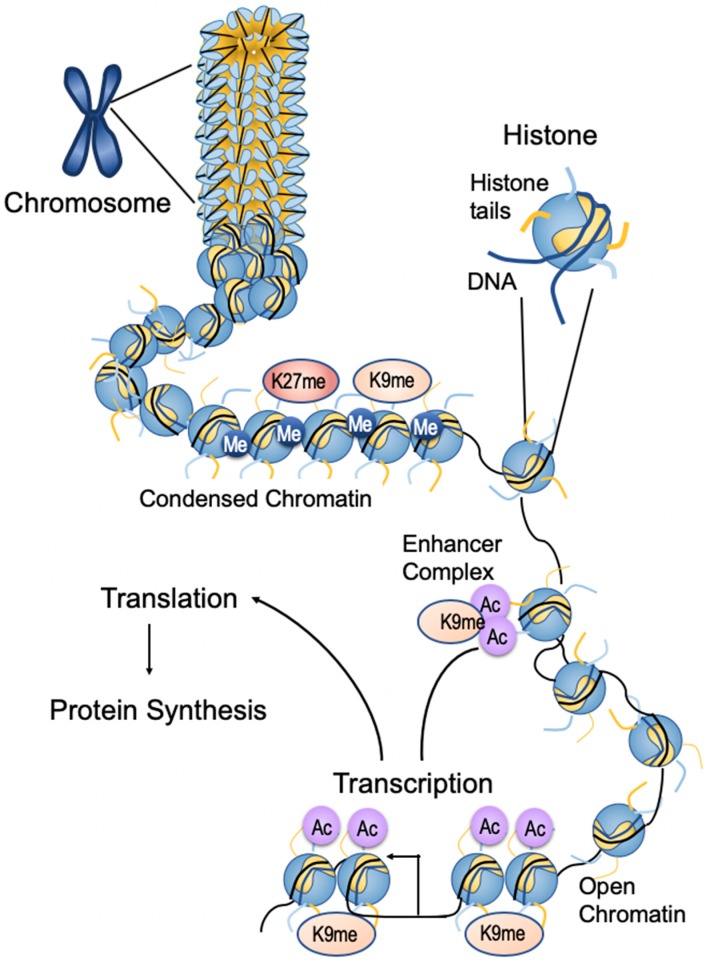Figure 2.
Epigenetic modifications of chromatin structure. Chromosomes are composed of DNA–protein complexes called chromatin. The basic subunit of chromatin is the nucleosome, which comprises an octamer of two copies of each of the core histone proteins—H2A, H2B, H3, and H4—wrapped by 147 bp of chromosomal DNA. Condensed chromatin is generally characterized by promoter DNA methylation and histone methylation, depending on the site of modification on the histone (for example, lysine 9 methylation (K9Me) and lysine 27 methylation (K27Me) on histone H3), resulting in repressed gene expression. Relaxed chromatin is marked by histone lysine acetylation and methylation of lysine 4 on histone 3 (K4Me) in the promoter regions, that promote gene expression. Histone lysine acetylation at the enhancer region also enhances gene expression by interacting with the promoter region through bromodomain-containing proteins (BRD) and other proteins. RNA methylation is a form of epigenetic regulation related to the translation and degradation of RNAs. Figure adapted from Kato et al. [38].

